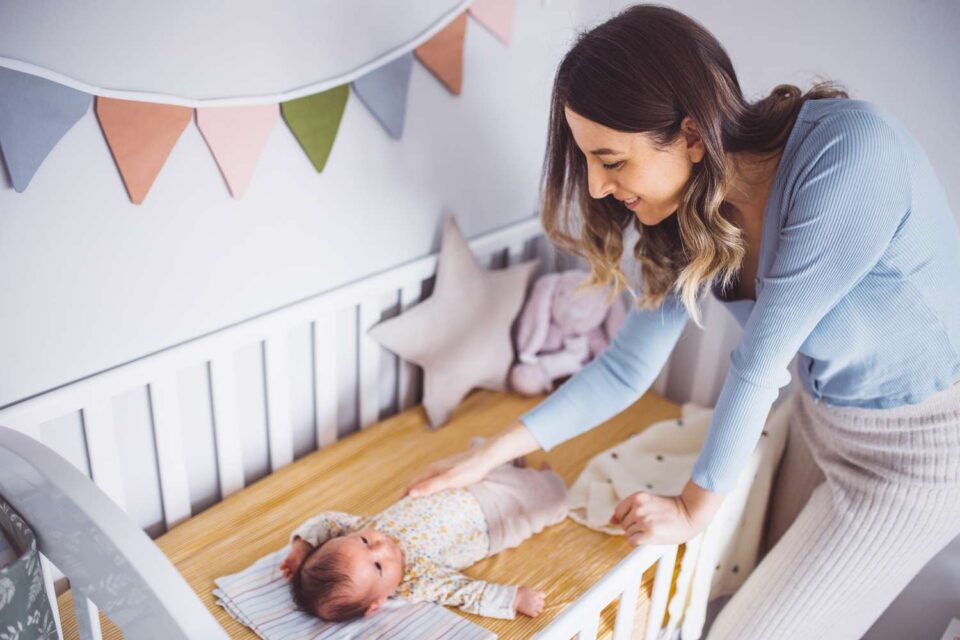Creating a safe and comfortable sleep environment is essential for your baby’s well-being, and the centerpiece of this environment is the baby crib. The baby crib serves as the secure haven where your little one will spend a significant amount of time sleeping and resting.
In this article, we will explore guidelines for setting up a safe sleep environment in your baby crib, prioritizing both safety standards and comfort.
Choosing a Safe Baby Crib
The foundation of a safe sleep environment begins with selecting a crib that meets safety standards. Look for cribs certified by regulatory organizations. Ensure that the crib is sturdy, with no missing or broken parts, and that it adheres to the recommended safety guidelines.
Positioning the Crib
Place the baby crib in a strategic location within the nursery. Avoid positioning the crib near windows, blinds, cords, or curtains to minimize potential hazards. Keep the crib away from radiators, heaters, or any other sources of direct heat. Ensure that the crib is not in direct sunlight to maintain a comfortable sleep temperature.
Assembly and Inspection
When assembling the crib, follow the manufacturer’s instructions meticulously. Check that all screws, bolts, and other hardware are tightly secured. Regularly inspect the crib for any signs of wear, loose parts, or damage. Promptly address any issues to maintain the structural integrity of the crib.
Mattress Fit and Firmness
The mattress inside the baby crib should fit snugly, leaving no gaps between the mattress and the crib walls. Opt for a firm mattress to reduce the risk of Sudden Infant Death Syndrome (SIDS). Soft bedding, including blankets and pillows, should be avoided during the first year to create a safe sleep environment.
Crib Slats and Spacing
Check the spacing between crib slats, ensuring that they are no more than 2 3/8 inches apart. This prevents the baby’s head from getting stuck between the slats. The crib design should not have cut out designs in the headboard or footboard that could pose entrapment hazards.
Adjustable Mattress Height
Many cribs come with adjustable mattress heights to accommodate the baby’s growth. Start with the mattress at the highest setting for a newborn and lower it as the baby becomes more mobile. This prevents the baby from climbing out of the crib once they start standing.
Avoiding Soft Bedding
Soft bedding poses a suffocation risk for infants, and it’s crucial to keep the crib free from pillows, quilts, stuffed animals, and bumper pads. A fitted crib sheet is the only bedding item recommended inside the crib. If additional warmth is needed, consider using a sleep sack or wearable blanket.
Creating a Comfortable Sleep Environment
Ensure that the baby crib is set up in a comfortable sleep environment. Maintain a room temperature that is conducive to sleep, typically between 68°F to 72°F (20°C to 22°C). Dress your baby in light sleepwear and consider using a sleep sack to provide warmth without the need for loose blankets.
Pacifiers and Sleep Position
Introducing a pacifier during sleep can help reduce the risk of SIDS. Place the baby on their back to sleep, as this is the safest sleep position. Avoid side or stomach sleeping, as it increases the risk of SIDS.
Regular Cleaning and Maintenance
Keep the baby crib clean and well-maintained by regularly wiping down surfaces with a damp cloth. Check for any loose threads or frayed fabric on crib sheets. Ensure that the crib is placed on a level surface and that the wheels or casters are securely locked.
Transitioning to a Toddler Bed
As your baby grows, you’ll eventually need to transition from the crib to a toddler bed. Most cribs can be converted into toddler beds by removing one side. This gradual transition allows your child to adjust to the new sleep environment while maintaining a sense of familiarity.
Monitoring Developmental Milestones
Keep an eye on your baby’s developmental milestones, especially when they start showing signs of climbing out of the crib. This indicates that it’s time to transition to a toddler bed to prevent accidents or injuries.
Promoting a Consistent Sleep Routine
Establishing a consistent sleep routine is essential for creating a safe and comfortable sleep environment. Develop a bedtime routine that includes activities such as a warm bath, gentle rocking, or reading a bedtime story. Consistency helps signal to your baby that it’s time for sleep.
Supervision and Surveillance
Use a baby monitor to keep an eye on your baby while they sleep. This allows you to monitor their safety and respond promptly if they need assistance. Place the monitor in a position that provides a clear view of the crib.
Conclusion
Setting up a safe sleep environment in your baby crib is a fundamental aspect of parenting. By adhering to safety guidelines, choosing the right crib, and maintaining a comfortable sleep space, you create an environment that promotes healthy sleep patterns and reduces the risk of sleep-related incidents.

